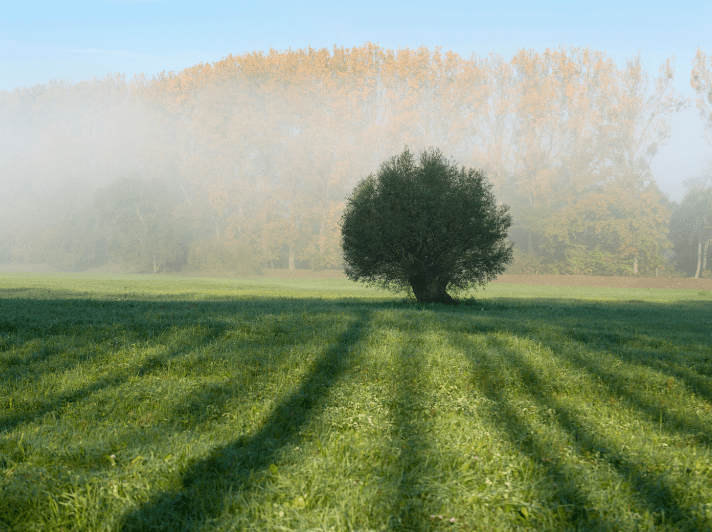
The white willow (Salix alba) is an undeniably beautiful tree with its silvery leaves and cascading branches. It’s also incredibly fast-growing, making it tempting for homeowners who crave instant shade. But before you rush out to buy a white willow, there are some serious things you need to know.
White Willow Basics
- Type: Deciduous tree
- Size: Up to 80 feet tall and equally wide
- Growth Rate: Very fast, up to several feet per year
- Preferred Conditions: Full sun, moist to wet soil
- Native To: Europe, Asia, and North Africa
Is White Willow Right for Your Yard?
-
Pros:
- Gorgeous, dramatic appearance
- Provides quick shade
- Tolerates wet areas where other trees struggle
-
Cons:
- Invasive in many regions, it can outcompete native plants
- Aggressive root systems that can damage pipes and foundations
- Weak wood is prone to breakage, posing a hazard
- Susceptible to pests and diseases
-
Alternatives:
Consider these less problematic options:
-
- Native willow species (check what’s suitable for your region)
- Weeping birch
- Red maple (great fall color)
Planting White Willow (Proceed with Extreme Caution)

If you plant a white willow, understand it’s a significant commitment. Choose a location far from buildings, pipes, and property lines. This tree is best suited to extensive properties where its spread won’t be a significant issue.
Important Note: White willows are invasive and have destructive root systems in many areas. Be sure it’s the right choice for your property, and check local regulations before planting.
- Site Selection: Choose a large open space away from buildings, sidewalks, underground pipes, and property lines. White willows prefer full sun and moist to wet soil.
- Obtain Your Tree: Purchase a sapling from a reputable nursery if possible. Avoid digging up wild seedlings, which can contribute to the tree’s spread.
- Prepare the Hole: Dig a hole twice as wide as the root ball and slightly shallower.
- Plant the Tree: Gently place the tree in the hole, ensuring the root collar (where the trunk meets the roots) sits slightly above ground level. Backfill with soil, tamping down lightly.
- Water & Mulch Water deeply immediately after planting. Add a layer of mulch around the tree, leaving a few inches clear around the trunk.
Ongoing Care
- Watering: Keep the soil consistently moist, especially during the first year.
- Pruning: Prune only minimally in the dormant season to maintain shape if desired. Heavy pruning will weaken the tree.
Managing White Willow: Pests, Diseases, and Breakage Risks
White willows, while beautiful, are unfortunately susceptible to a range of problems. Here’s how to manage some of the most common issues:
- Pests: Aphids, caterpillars, and willow beetles can be troublesome.
- Mild infestations: Try blasting them off with a strong spray of water, or introduce beneficial insects like ladybugs for natural control.
- Severe infestations: Insecticidal soap or horticultural oil might be necessary, but use cautiously to avoid harming beneficial insects.
- Diseases: Canker, powdery mildew, and rust can disfigure the tree and weaken it.
- Prevention is key: Plant your willow in full sun, with good air circulation. Prune diseased branches promptly and sanitize your tools.
- Treatment: Fungicide applications may help if the disease is caught early. Severely infected trees might need to be removed.
- Breakage: White willows have weak wood that’s prone to snapping.
- Proactive Pruning: Regularly remove dead, diseased or crossing branches to reduce breakage risk.
- Support: Cabling or bracing may be necessary for particularly vulnerable branches.
- Cleanup: Quickly remove fallen branches after storms to prevent further damage.
Important Note: If your white willow experiences repeated, severe problems, it may be a sign the tree is not suited to its location. Consider replacing it with a less problematic species long-term.
People Also Ask
-
Can I plant a white willow near a pond?
Yes, white willows thrive near water. However, be aware of their invasive potential and plant them far enough away to prevent roots from damaging the pond liner or any surrounding structures.
-
How do I get rid of a white willow tree?
Removing a white willow can be challenging. Professional removal is often recommended due to the extensive root system. If you attempt it yourself, cut the tree down and treat the stump with herbicide to prevent regrowth.
-
Is white willow bark the same as aspirin?
White willow bark contains salicin, a compound similar to the active ingredient in aspirin. However, it’s important to consult a doctor before using it for medicinal purposes.
-
Do deer eat white willow trees?
Yes, deer enjoy browsing on white willow foliage, which can be a problem if you’re trying to protect the tree.
-
Will white willow roots damage my house foundation?
Yes, the aggressive root system of a white willow can pose a serious threat to foundations, especially if the tree is planted too close to the house.
- Are white willows messy trees?
Yes, white willows are considered messy trees. They shed leaves, small branches, and catkins throughout the year, requiring regular cleanup.
FAQ
-
How long do white willows live?
White willows are relatively short-lived trees. They typically have a lifespan of 50-70 years, though some individuals might live a bit longer.
-
Are there dwarf varieties of white willow?
While there are no true “dwarf” varieties, a few cultivars stay smaller than the standard white willow. ‘Tristis’ (Golden Weeping Willow) is a popular option, usually reaching a mature height of around 50 feet.
-
How fast do white willows grow?
White willows are incredibly fast growers. They can easily add several feet of height per year, especially when young.
-
Can I keep a white willow small by pruning?
Regular, heavy pruning could limit a white willow’s size, but it’s not ideal. The tree will always fight its natural form; constant pruning can weaken it over time.
-
Do white willows have deep roots?
Yes, white willows have aggressive, wide-spreading root systems. The roots tend to be shallow, growing close to the surface, making them a danger to foundations, pipes, and sidewalks.
-
Is my white willow tree male or female?
White willows are dioecious, meaning there are separate male and female trees. Male trees produce yellow catkins, while female trees have green catkins.
-
Why is my white willow dropping leaves/branches?
White willows naturally shed leaves and small branches fairly often. However, excessive shedding or the loss of large branches can indicate disease, pest infestation, or stress.
Conclusion
The white willow is a tree of extremes. While incredibly beautiful, it carries serious risks that make it unsuitable for most landscapes. If you admire its look, consider planting a responsible, native alternative to support your local environment.






















